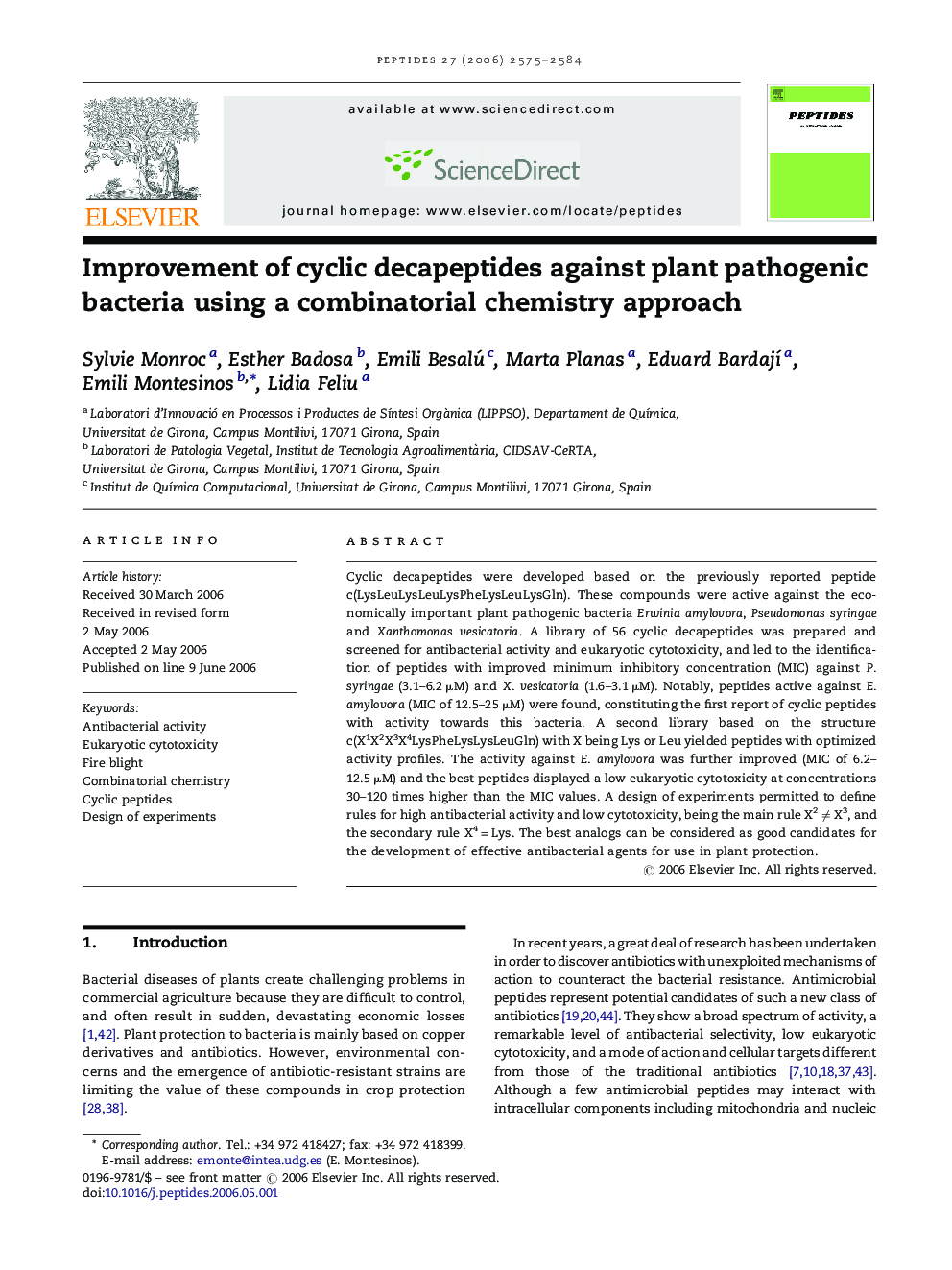| Article ID | Journal | Published Year | Pages | File Type |
|---|---|---|---|---|
| 2007808 | Peptides | 2006 | 10 Pages |
Cyclic decapeptides were developed based on the previously reported peptide c(LysLeuLysLeuLysPheLysLeuLysGln). These compounds were active against the economically important plant pathogenic bacteria Erwinia amylovora, Pseudomonas syringae and Xanthomonas vesicatoria. A library of 56 cyclic decapeptides was prepared and screened for antibacterial activity and eukaryotic cytotoxicity, and led to the identification of peptides with improved minimum inhibitory concentration (MIC) against P. syringae (3.1–6.2 μM) and X. vesicatoria (1.6–3.1 μM). Notably, peptides active against E. amylovora (MIC of 12.5–25 μM) were found, constituting the first report of cyclic peptides with activity towards this bacteria. A second library based on the structure c(X1X2X3X4LysPheLysLysLeuGln) with X being Lys or Leu yielded peptides with optimized activity profiles. The activity against E. amylovora was further improved (MIC of 6.2–12.5 μM) and the best peptides displayed a low eukaryotic cytotoxicity at concentrations 30–120 times higher than the MIC values. A design of experiments permitted to define rules for high antibacterial activity and low cytotoxicity, being the main rule X2 ≠ X3, and the secondary rule X4 = Lys. The best analogs can be considered as good candidates for the development of effective antibacterial agents for use in plant protection.
